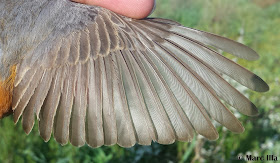Since I started birding I've been focusing most of my hours and days in the field close to my place, in Central Catalunya. In practical facts there's an obvious reason to go there, since a relatively proper wetland in less than 10 minutes by foot from my bedroom. And despite you can't compare the place to a true birding hotspot, I have seen quite much interesting stuff and, above all, learnt a lot. These are some lines of experiences in my local areas during some last few days.
I came up with this thoughts the other day when I was extremely pleased watching the first
Sandwich Tern (Sterna sandvicensis) seen in my area and in this part of Central Catalunya. Sandwitch Terns are common along the shoreline, fishing in the sea, and they can be seen all year round in the Mediterranean, where they both breed and winter. Nonetheless, inland sightings are very rare! So probably that's why I had never expected this species to show up here. Anyway, the morning of the 25th of March 2017 this individual showed up after an intense storm the previous night.
 |
The whole pale plumage (especially the outer primaries) suggest that it's
an adult (EURING 6 -at least-). |
Every spring is different in migration terms! If I had to summarize what this spring season has been so far in my area I would point out the raptors. Due to wind, rain and other meteorological circumstances it has been a remarcable good spring for migrating raptors so far, with no less than 170
Short-toed Eagles (Circaetus gallicus), 2
Booted Eagles (Aquila pennata), 42
Common Buzzards (Buteo buteo), 6
Red Kites (Milvus milvus), 327
Black Kites (Milvus migrans), 46
Marsh Harriers (Circus aeruginosus), 1
Hen Harrier (Circus cyaneus), 35
Sparrowhawks (Accipiter nisus) and 5
Goshawks (Accipiter gentilis). Most of Black Kites were seen together in a big flock the 1st of April in the afternoon, when a
Black Stork (Ciconia nigra) decided to pass by too.
Also,
White Storks (Ciconia ciconia) flocks have been quite regular. The latest flock spend the night between the 1st and the 2nd of April, and I could manage to see some rings the following morning, mostly from Germany but also 3 from Switzerland, 1 from the Netherlands and 1 from Sweden.
 |
| Swedish Stork tiding up... |
 |
| Some German individuals also wanted to look nice. |
While reading the ring numbers I had very good light, which it was a good suport for getting most of the codes. After looking at them for a while, I realised of some plumage differences between individuals. When the information from the ringed individuals comes, it will be interesting to check if this ageing tips are correct!
 |
Second-year (EURING 5). White Storks have a complete
postjuvenile moult, but it starts between December and May of
the second calendar year. This individual, with rather brownish
plumage except for some very fresh (replaced) scapulars, hasn't
started the primary moult yet. |
 |
Primary moult suspended probably due to migration. The outer
primaries, primary coverts and secondaries (not replaced) look
more worn and paler than in the individual below. Maybe an a
second-year that hatched rather early? Could a third calendar
year look like this due to earlier complete moult in the second
years? Is it just an adult with more worn old plumage? |
 |
| Adult, with suspended primary moult, probably due to migration. |
 |
Adult, with some secondaries that haven't been replaced (yet)
in the last complete moult. |
Most of my ringing stations are making 5 full years of activity this year, and thus some interesting recaps are already possible to get. For instance this (at least) 5 years old
Great Tit (Parus major), which was caught with her partner, also ringed the same day and also older than 5 years now!
Blackcaps (Sylvia atricapilla) are probably the most common migrant so far in the area, with rather good numbers.
Also,
Willow Warblers (Phylloscopus trochilus),
Subalpine Warblers (Sylvia cantillans),
Common Redstarts (Phoenicurus phoenicurus) and
Nightingales (Luscinia megarhynchos) have arrived, together with an early
Pied Flycatcher (Ficedula hypoeluca).
 |
| Willow Warbler (Phylloscopus trochilus). |
 |
| Subalpine Warbler (Sylvia cantillans), male. |
 |
| Second-year (EURING 5) male Redstart (P. phoenicurus). |
 |
| Second-year (EURING 5) male Redstart. |
 |
| Adult (EURING 6) male Redstart. |
 |
| Common Nightingale (Luscinia megarhynchos). |
 |
| Adult (EURING 6) male Pied Flycatcher (Ficedula hypoeluca). |
This
Scops Owl (Otus scops) was also a nice surprise in the nets!
It was an adult (EUING 6), due to the relatively fresh flight feathers and their pattern, also in the tail.
But local birding also allows to study in proper detail the local species, such as
Woodpigeons (Columba palumbus).
 |
Adult (EURING 6). Some secondaries are retained in the last
moult, but they are rather fresh and adult-like (notice for instance
the edges). |
 |
Indeterminate age (EURING 4). All secondaries have been
moulted in the last moult, or at least no retained ones are
visible. |
 |
Probable second-year (EURING 5). Several secondaries have
been retained in the complete postjuvenile moult, they are worn
and narrower. |
Green Woodpecker (Picus viridis) was a nice bonus for these days, and indeed a species that I don't catch so regularly.
 |
Second-year (EURING 5) female, with all primary coverts still in
juvenile pattern. No red on the malar stripe. |
But probably the most local bird I had the chance to study was this
Red-legged Partridge (Alectoris rufa) that somehow managed to get caught. A typical second-year (EURING 5), with the two outermost primaries still juvenile.
Let's continue with spring!






































No comments:
Post a Comment